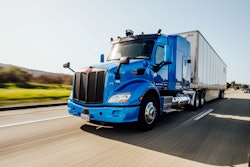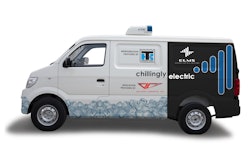
Heavy-duty fleet organizations continue to face major challenges in the retention and recruitment of drivers at a particularly perilous time, as drivers are needed more than ever to continue moving the shipment of goods, food, medicine and vaccines across the country.
According to recent data from the American Trucking Association (ATA), driver turnover for carriers increased by double-digit percentages during the third quarter of 2020 even as the industry began to return from a COVID-19 induced slump.
The tight market for drivers has made retention even more important in the current economy. ACT Research recently said its latest For-Hire Trucking Index showed a driver availability index that dropped to a new low of 16.7 in March, down from its previous low of 23.6 in February.
Driver turnover rates remain inflated
The recent data showed that the annualized turnover rate at truckload carriers with more than $30 million in annual revenue increased to 92% during the third quarter. For smaller carriers the turnover rate increased to 74%2.
While it would be easy to point toward the Coronavirus disease (COVID-19) as the culprit, the fact remains that this has been a growing issue for several years now.
For the fourth consecutive year, driver shortage remains the trucking industry’s leading concern on the overall list of challenges and concerns, according to report published by the American Transportation Research Institute (ATRI).
Driver shortages are also a major concern specifically for private fleet organizations, even though the numbers are not as dire as for-hire carriers. The latest benchmarking report from the National Private Truck Council (NPTC) in 2020 shows that driver turnover has continued to increase, reaching close to an all-time high of 18.5% in 2020. For comparison purposes, in the previous year private fleets reported turnover of 16.9%, up a point and a half over the previous year’s 15.4% average turnover.
Compensation programs are regularly discussed to attract new drivers and retain existing ones. However, fleets are beginning to utilize other strategies for driver recruitment and retention.
Onboarding new drivers can be costly
Typically, the average cost of onboarding a new driver can exceed $10,000 for many companies. Organization with private fleets and for-hire carriers therefore have a continuous motivation for retaining their existing drivers to avoid paying this hefty on-boarding expense. What they’re now coming to realize is that having drivers operate newer trucks can improve their chances of retention.
Newer trucks come with newer technology, advanced safety features and less maintenance and repair problems, which equates to less downtime and breakdowns on the side of the road. This means drivers can more frequently return home to their families at the end of the day and operate trucks on their routes with more confidence they will avoid breakdowns on the side of the road.
Advanced safety features benefit drivers and fleets
The advanced safety features found in today’s newer trucks are a significant motivating factor for drivers to remain with a particular fleet. Today’s drivers enjoy comfort and safety items such as the following:
· Air ride suspension
· Power steering
· Automated manual transmission
· Engine HP and speed settings
· Lane departure
· Collision mitigation
· Adaptive cruise control
· Blind spot monitoring
· Roll stability
Fleets themselves are realizing a greater return on their investment (ROI) into newer trucks when more of these trucks are placed into service. In fact, the cost for all safety equipment reduces overall collision repairs and yield a return on the original safety technology investment in about 18 months. These are substantial savings combined with the cost of onboarding new drivers.
As more fleets and transportation organizations replace aging trucks with newer, safer equipment on the roads, these companies will quickly realize they will keep their drivers and others on the road safer, retain their drivers at a higher rate and enjoy substantial savings in reduced accident and litigation costs as well as lower maintenance and repair expenditures.


















